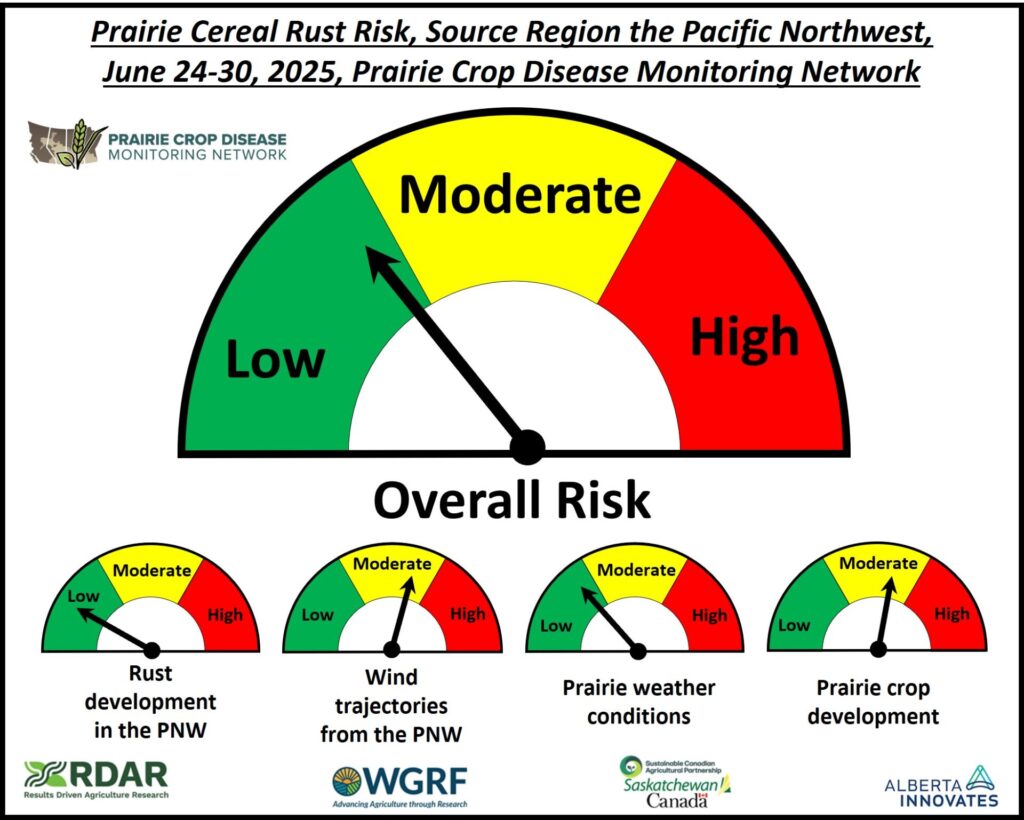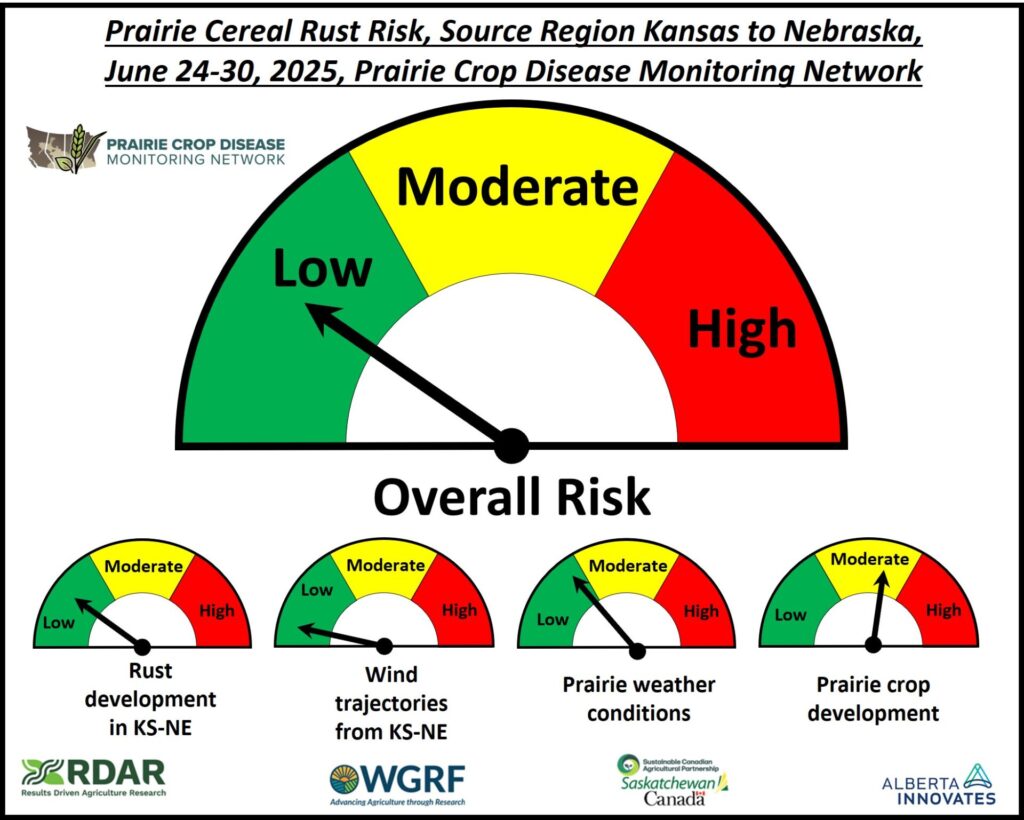The eighth weekly Prairie Crop Disease Monitoring Network (PCDMN) Prairie wind trajectory cereal rust risk report for 2025 is available for download now at the following link: June 24-30, 2025.
Crop development and weather
- Prairie winter wheat crops are generally moving into the post-heading and grain filling growth stages, while much of the spring wheat crop is moving into flag leaf emergence, with some early planted crops moving into head emergence and flowering
- Temperatures have been somewhat higher than normal for most of the Prairie region since April 1, 2025, and from June 23-29, 2025 temperatures ranged from around 12 to 20°C. These temperatures are generally not conducive to leaf and stem rust development, although cooler temperatures are more conducive for stripe rust
- Growing season rainfall for the Prairie region has been variable with some areas below or above normal. Recent rainfall in some areas the Prairies could potentially have washed rust spores from the air and into wheat crops, especially winter wheat, while also resulting in canopy moisture conditions that may favour infection and further rust development
Pacific Northwest
- There were moderate to high numbers of reverse wind trajectories that passed over the PNW region and into the prairies from June 24-30, 2025
- Stripe rust development, especially in commercial winter wheat fields is generally lower versus 2024
- Overall, as of July 3, 2025 the risk of stripe rust appearance from the PNW is generally low and scouting for this disease in the Prairie region is generally not urgent
- Nonetheless, Prairie locations with three or more trajectories may be at higher risk. The late development and low levels of stripe rust in commercial PNW fields has had an overall dampening effect on the rust risk from the PNW

Montana
- The recent detection of stripe rust in research plots at multiple locations in Montana brings the stripe rust issue adjacent to the Prairie region
- These observations bring the stripe rust problem much closer to southern Alberta and southern Saskatchewan and could represent a regional source of this disease
- There were a moderate number of trajectories that passed over Montana and into the Prairie region from June 24-30, 2025
- Overall, as of July 3, 2025 the risk of Montana acting as a source of stripe rust for Prairie region is generally low given observations of stripe rust have been in research trial plots
- However, further stripe rust development in commercial Montana wheat fields could increase the risk for Prairie producers
Kansas-Nebraska corridor
- There was a low number of wind trajectory events from the KS/NE region for June 24-30, 2025
- Overall, as of July 3, 2025 the risk of stem, leaf, stripe, and crown rust appearance from the Kansas-Nebraska corridor is generally limited and scouting for these diseases in the Prairies is not urgent
- Dry conditions and the progress of winter wheat crop towards maturity and harvest will reduce the risk from the KS/NE region. However, the detection of stripe rust in research plots in Wisconsin brings the stripe rust issue closer to the Prairie region


